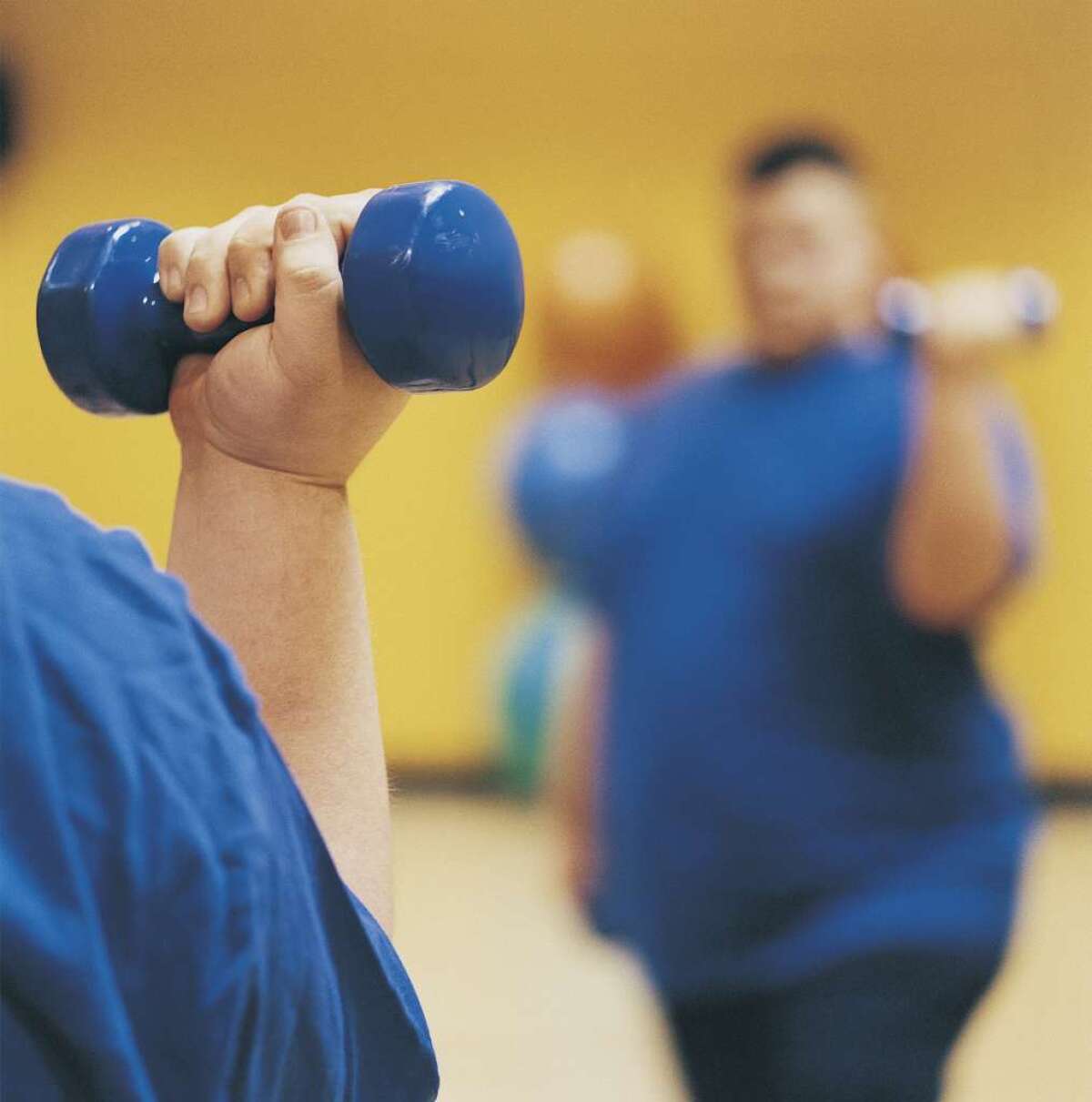Pumping iron failing to make you leaner? Blame your genes

Is working out not shaping you up? New research finds that women who carry a host of genetic variations associated with obesity are resistant to resistance training.
You’re a regular in the gym’s weight room, grunting and sweating in hopes of turning fat into muscle and maybe even losing some weight. And yet your goal eludes you.
New research on women finds that some are resistant to resistance training. For these women, the new study suggests, a welter of genetic variations protects their bodies from fat loss and prime their bodies to maintain their weight, even in the face of heroic body-sculpting efforts.
In short, however hard these unlucky women work to shape up with resistance exercise, their fat genes seem to work harder to thwart their efforts.
Among the study’s 148 women between 35 and 60, those who carried few of the 21 genetic risk variants for obesity that researchers measured largely responded to a regimen of weekly resistance exercise by losing weight, trimming fat -- especially abdominal fat -- and shifting their overall body composition in a leaner direction.
The more of those 21 genetic variants a woman had, the less likely she was to see any of these changes, even if she was a conscientious participant in the three 75-minute resistance-training sessions that researchers asked subjects to attend each week for one year.
Published Thursday in the International Journal of Obesity, these findings underscore the limits of even intensive physical activity in reducing the risks of people whose genes predispose them to certain health conditions. Other studies have found that for people at elevated genetic risk of Type 2 diabetes and of worrisome cholesterol, exercise regimens designed to reduce those risks were less effective in doing so than they were for people whose genes did not spell trouble.
After a year, women in the exercise arm of the trial were clearly trimmer and in better shape, overall, than women who did not get the exercise intervention. But those averages hid the struggles of women at high genetic risk for obesity, who were working hard and not getting the hoped-for results.
The average age of subjects in the current study was 56, and in enrolling participants, researchers requested that the women make no efforts to change their diet or body weight during the study, or either start or discontinue hormone-replacement therapy. The muscle strength of women assigned to the study’s resistance-exercise arm was tested every six to eight weeks to ensure they were increasing the loads they bore and maintaining the intensity of their exercise as they became more fit.
Of the 32 genetic variations that have been linked to obesity in humans, the study’s authors tested each woman for 21 genetic variants. They weighted the genetic variations according to how strongly they have been found to influence obesity, ranked each woman on how many or few of those alleles she carried, and divided the women into low-, intermediate- and high-risk groups.
Researchers found no evidence that any one of the obesity-related 21 genetic variants they measured was more decisive than another in reducing the positive effects of resistance training. Instead, they suggested, the grab-bag of obesity-related genes appeared to work together to thwart a woman’s success. While exercise might work to reduce appetite and turn up the calorie-burning thermostat of a woman with few obesity genes, the women with many appeared to compensate for their work in the gym with increased appetites, more efficient calorie-burning and other physiological measures that protected their fat stores and prevented weight loss.
In fact, while women who had low- and intermediate-levels of obesity-related genetic variants lost weight and fat mass and increased their lean mass, women with the highest levels of those variants gained weight and lean mass, while their fat mass stayed steady.
Watching your own weight and the nation’s? Me too. Follow me on Twitter @LATMelissaHealy and “like” Los Angeles Times Science & Health on Facebook.




